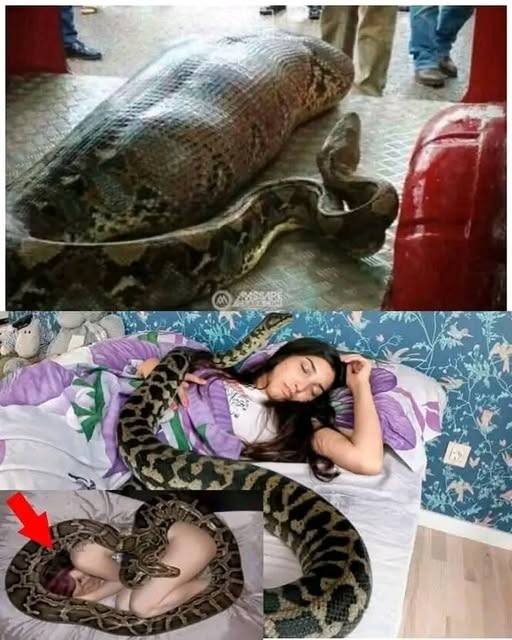
Cassandra, a 35-year-old woman living alone, had always felt a deep connection with her pet python, Reggie. In an effort to strengthen their bond, she began sleeping with him curled around her body each night. This nightly ritual provided her with comfort and companionship, and she believed it was a unique expression of affection between them.
However, Cassandra noticed a troubling change in Reggie’s behavior. He refused to eat his usual meals, including his favorite rabbit, and seemed increasingly agitated. Concerned for his well-being, she took him to Dr. Hanson, a veterinarian known for his expertise with exotic animals. During the examination, Dr. Hanson conducted an ultrasound and discovered that Reggie’s stomach was empty. He explained that this was unusual for a snake of his size and suggested that Reggie might be preparing for a large meal.
Dr. Hanson then inquired about Reggie’s sleeping habits. When Cassandra mentioned that Reggie often coiled around her during the night, the veterinarian expressed concern. He explained that pythons, especially large ones, can go without food for extended periods while they prepare to consume a large prey item. In this case, Reggie had been sizing up Cassandra as potential prey. His refusal to eat was a sign that he was conserving energy for a significant meal.
Shocked and frightened by this revelation, Cassandra realized that what she had perceived as affection was actually a dangerous behavior rooted in Reggie’s natural instincts. She understood the importance of respecting the boundaries between humans and wild animals, even those kept as pets. This experience served as a stark reminder of the unpredictable nature of exotic pets and the necessity of maintaining appropriate boundaries for safety.



